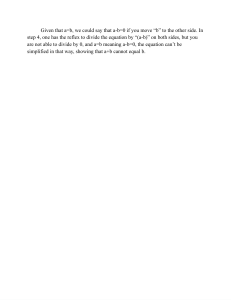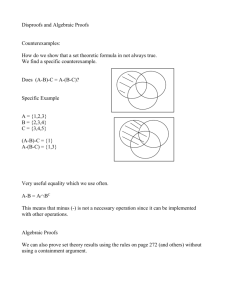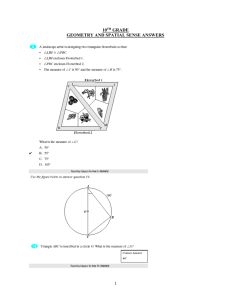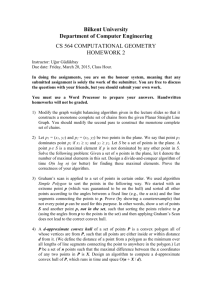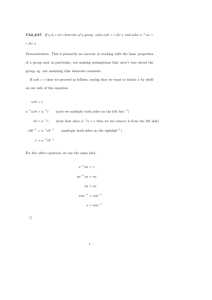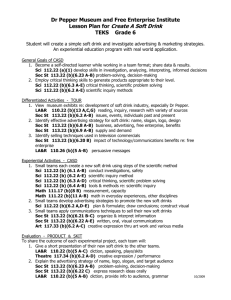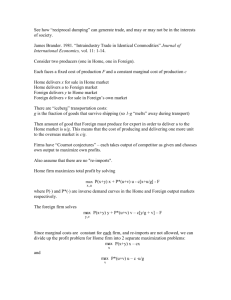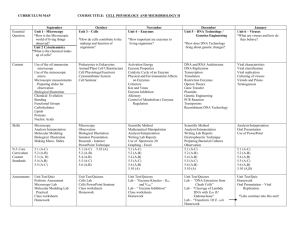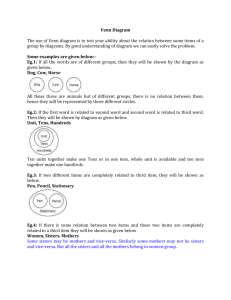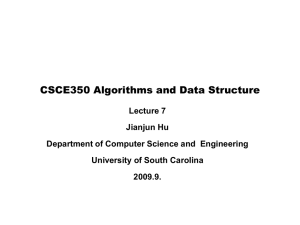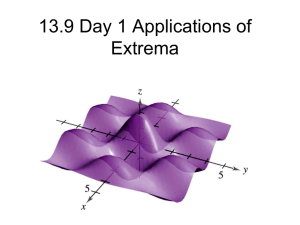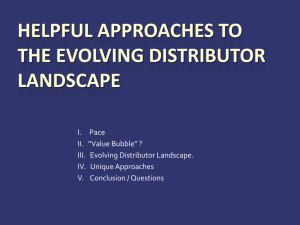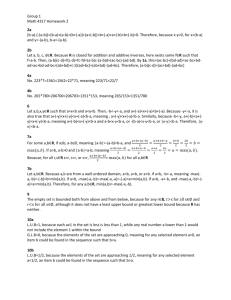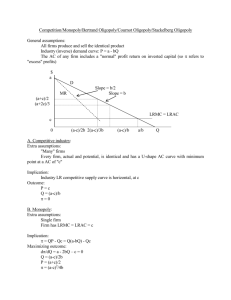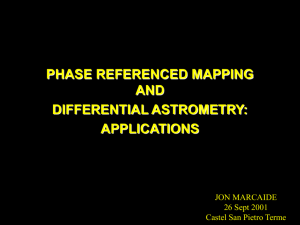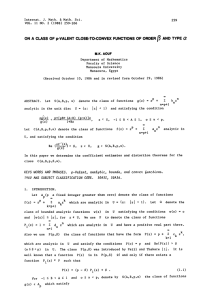A Computational Geometry briefcase:
advertisement
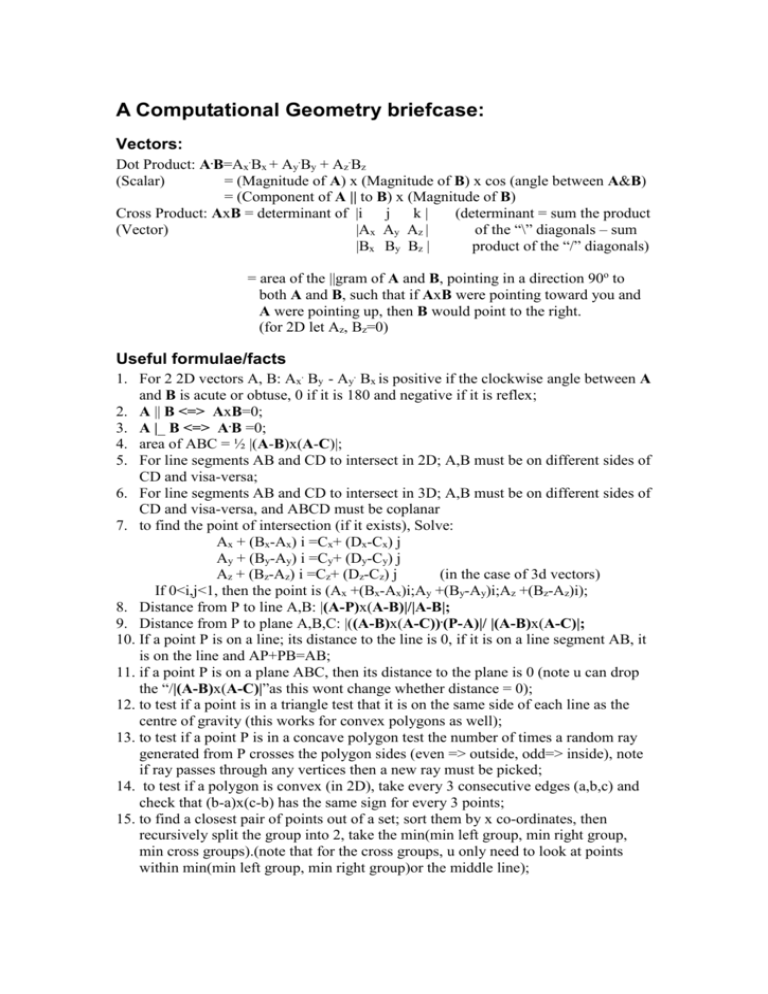
A Computational Geometry briefcase: Vectors: Dot Product: A.B=Ax.Bx + Ay.By + Az.Bz (Scalar) = (Magnitude of A) x (Magnitude of B) x cos (angle between A&B) = (Component of A || to B) x (Magnitude of B) Cross Product: AxB = determinant of |i j k| (determinant = sum the product (Vector) |Ax Ay Az | of the “\” diagonals – sum |Bx By Bz | product of the “/” diagonals) = area of the ||gram of A and B, pointing in a direction 90o to both A and B, such that if AxB were pointing toward you and A were pointing up, then B would point to the right. (for 2D let Az, Bz=0) Useful formulae/facts 1. For 2 2D vectors A, B: Ax. By - Ay. Bx is positive if the clockwise angle between A and B is acute or obtuse, 0 if it is 180 and negative if it is reflex; 2. A || B <=> AxB=0; 3. A |_ B <=> A.B =0; 4. area of ABC = ½ |(A-B)x(A-C)|; 5. For line segments AB and CD to intersect in 2D; A,B must be on different sides of CD and visa-versa; 6. For line segments AB and CD to intersect in 3D; A,B must be on different sides of CD and visa-versa, and ABCD must be coplanar 7. to find the point of intersection (if it exists), Solve: Ax + (Bx-Ax) i =Cx+ (Dx-Cx) j Ay + (By-Ay) i =Cy+ (Dy-Cy) j Az + (Bz-Az) i =Cz+ (Dz-Cz) j (in the case of 3d vectors) If 0<i,j<1, then the point is (Ax +(Bx-Ax)i;Ay +(By-Ay)i;Az +(Bz-Az)i); 8. Distance from P to line A,B: |(A-P)x(A-B)|/|A-B|; 9. Distance from P to plane A,B,C: |((A-B)x(A-C)).(P-A)|/ |(A-B)x(A-C)|; 10. If a point P is on a line; its distance to the line is 0, if it is on a line segment AB, it is on the line and AP+PB=AB; 11. if a point P is on a plane ABC, then its distance to the plane is 0 (note u can drop the “/|(A-B)x(A-C)|”as this wont change whether distance = 0); 12. to test if a point is in a triangle test that it is on the same side of each line as the centre of gravity (this works for convex polygons as well); 13. to test if a point P is in a concave polygon test the number of times a random ray generated from P crosses the polygon sides (even => outside, odd=> inside), note if ray passes through any vertices then a new ray must be picked; 14. to test if a polygon is convex (in 2D), take every 3 consecutive edges (a,b,c) and check that (b-a)x(c-b) has the same sign for every 3 points; 15. to find a closest pair of points out of a set; sort them by x co-ordinates, then recursively split the group into 2, take the min(min left group, min right group, min cross groups).(note that for the cross groups, u only need to look at points within min(min left group, min right group)or the middle line); 16. Algorithm for generating a simple closed path: select the left most of the bottom most points, sort the other points according to the angle they make when joined with the anchor. Put anchor in front of list: 17. Algorith for generating the convex hull: generate simple closed path, loop round the path, if the present vertex is convex (use point 1) move to the next vertex, if not remove the vertex and move to the previous vertex. Other things worth being mentioned: Tolerances: never test for equality with floating point numbers, always test is the two points are within a certain error margin of each other. Special cases: computational geometry is full of special cases, make sure your program solves them Partitioning: dividing the plane/space into different area’s so as to avoid having to check through all points/lines etc. Monte Carlo: instead of calculating the probability of something happening, generate many random events and test whether they fulfil this property (eg, when trying to calculate the area of a shape, put it in a box, generate random points in the box, and test how many are in the shape: area of shape = (area of box) x (number of points in shape)/ number or points.)
